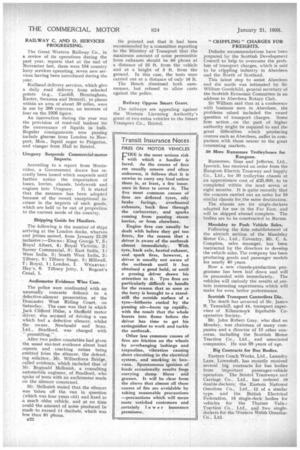Transit Insurance Notes
Page 8

If you've noticed an error in this article please click here to report it so we can fix it.
FIRES ON MOTOR VEHICLES
rIRE is the most serious risk 1 with which a haulier is faced. As the causes of fires are usually unseen and often unknown, it follows that it is unwise to carry any load unless there is, at least, a fire insurance in force to cover it. The five most common causes of fires are deflated tyres, oily brake facings, overheated exhausts, back fires through the carburetter, and sparks coming from passing steam lorries, or from elsewhere.
Engine fires can usually be dealt with before they get too fierce, for the reason that a driver is aware of the outbreak almost immediately. With tyre, back axle, heated exhaust, and spark fires, however, a driver is usually not aware of the outbreak until it has obtained a good hold, or until a passing driver draws his attention to it. Tyre fires are particularly difficult to handle for the reason that so soon as the lorry is brought to a standstill the outside surface of a tyre—hitherto cooled by the passing air—heats up rapidly, with the result that the whole bursts into flame before the driver has time to get his extinguisher to work and tackle the outbreak.
Other less common causes of fires are friction on the wheels by overhanging lashings and tarpaulins, vibration causing short circuiting in the electrical system, and smoking in boxvans. Spontaneous ignition of loads occasionally results from carrying damp fibres and grasses. It will be clear from the above that almost all those causes of fire are avoidable by taking reasonable precautions —precautions which will mean more satisfied customers and certainly lower insurance premiums.






























